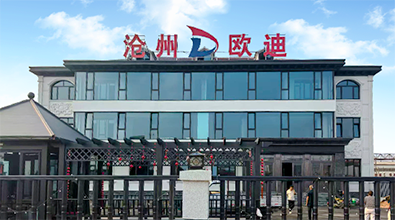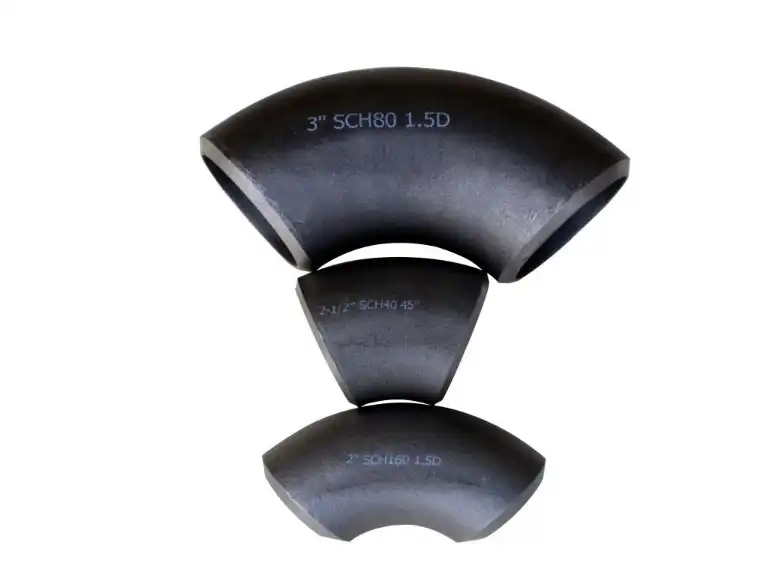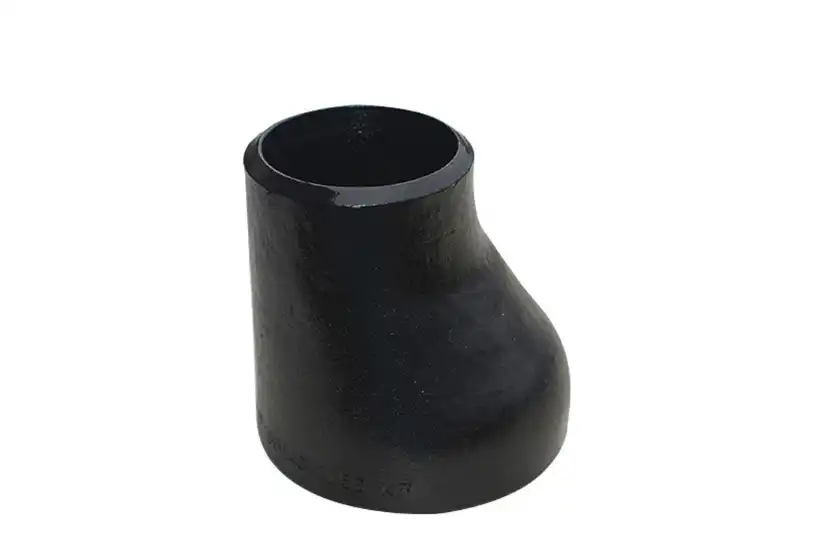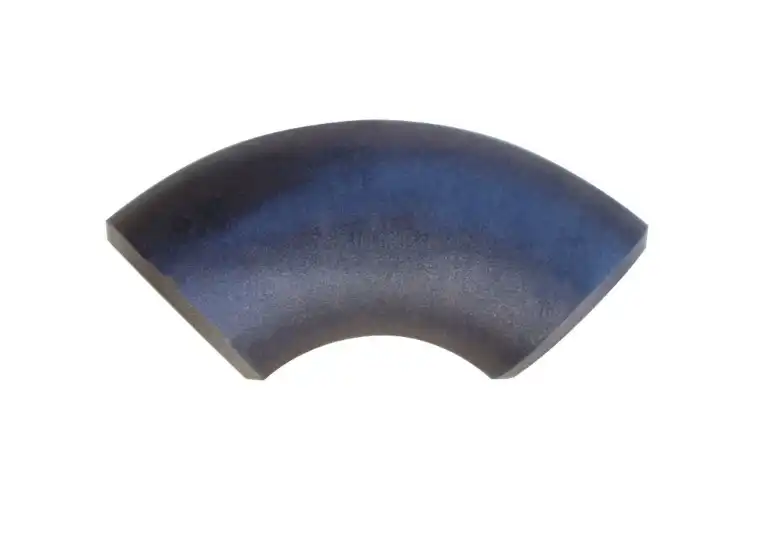Are Short Radius Elbows the Key to Space-Saving Installations?
In the world of industrial setups and pipe systems, room economy is often very important. Engineers and planners are always looking for new ways to make the most of the room they have while keeping the system working. One popular proposed answer is the use of short radius joints. These small parts might be the answer to the question: Do short radius bends make setups that save space possible? This blog post talks about short radius elbows, including what they are, their pros, and how they can be used. It also explains how they help make pipe plans that are smaller and more efficient. We will look at how these fittings are similar to and different from the ones with long radius, talk about the best ways to use them, and think about how they can affect the design of the whole system. Short radius elbows have a lot of promise. When people in different fields learn about this, they can make smart choices about whether or not to use these space-saving parts in their projects.

What Makes Short Radius Elbows Ideal for Compact Piping Layouts?
Reduced Footprint and Space Savings
Short radius elbows are made to create more compact pipe bends, which makes them perfect for when space is limited. The main benefit of short radius elbows is that they have a smaller central radius. This radius is usually about 1 to 1.5 times the standard pipe size. Because of its small shape, this plumbing system can make sharper turns and be laid out more closely together. In tight industrial areas or small places within buildings, short radius elbows can be the difference between being able to install something and not being able to install it at all. Designers can make more efficient use of the room with these pieces, which might lower the need for major changes to be made to current buildings or tools.
Flexibility in Design and Installation
Short radius elbows are small, which gives engineers and designers more freedom when they plan pipe systems. These fittings make it easier to get creative when it comes to moving lines around things or through areas with little room. Short radius elbows can be very helpful in repair projects or developments where it is necessary to work within the limits of infrastructure that is already in place. They make it possible for pipes to be moved in ways that might not be possible with standard long-radius bends. This gives more options for system design and efficiency. This can make space use more efficient, which might lower the total size needed for motor rooms or equipment areas.
Cost-Effective Solution for Space Constraints
Installing small radius bends in pipe systems can be a cheap way to deal with not having enough room. These fittings can make it easier to use smaller plans, which can lower the need to make costly changes to structures or buy extra room for pipe systems. Using short radius joints in new construction projects might make it possible to have smaller mechanical rooms or equipment areas. This could lower the cost of building altogether. Also, in places where space is limited, like remote platforms or small industrial buildings, the savings in space that come from using short radius bends can lead to big savings in cost. Short radius elbows may cost about the same or a little more than long radius ones, but they can save room and make the design more flexible, which can lower the total cost of a project.
Comparing Short Radius and Long Radius Elbows in Tight Spaces
Dimensional Differences and Impact on Layout
The central radius is the main difference between short and long radius elbows. The central radius of a short radius elbow is usually 1 to 1.5 times the pipe's nominal size, but for a long radius elbow, it is 1.5 times the nominal pipe size. This difference in size has a big effect on how things can be arranged in small areas. Short radius bends make it easier to turn more sharply and make the overall shape smaller, which can be very important in tight spaces. For example, if lines need to go around tools or parts of the building that are already there, small radius bends might be the only way to make it work. Because short radius bends are small, you can make shorter sections of pipe, which might save money on materials and make the system smaller overall.
Flow Characteristics and Pressure Drop Considerations
It's important to think about how short and long radius bends affect flow and pressure drop when using them in a comparison. Because of their softer bend, long radius elbows usually allow for better flow. This means that there is less of a drop in pressure across the joint. Short radius elbows have tighter bends, which can make things more turbulent and cause pressure drops. But how well the system works relies on many things, like how fast the fluid moves and the overall design of the system. In a lot of cases, especially ones with lower flow rates or less important pressure needs, the difference in pressure drop between short and long radius bends may not matter when compared to the benefits of saving room. When engineers choose short or long radius elbows for uses with limited space, they need to carefully consider the pros and cons of each option in terms of saving space and flow performance.
Installation and Maintenance Considerations
In tight areas, installation and upkeep are also affected by the choice between short- and long-radius joints. Short radius elbows make installation easier in tight spaces because they need less room for fitting and welding. This can be very helpful for remodeling jobs or when there isn't a lot of space to work in a workplace setting. Short radius elbows make sharper turns, which can make it harder to check and clean the system, especially if it tends to get dirty or has buildup. Long radius elbows need more room, but are usually easier to get to for upkeep. When you make systems for small areas, you need to think about both the first installation and the long-term upkeep. Sometimes, the short radius bends that save room might make upkeep harder or more frequent.
Common Applications for Short Radius Elbows in Industry
Petrochemical and Refinery Piping Systems
In the petroleum and processing industries, which often have to work with complex pipe systems in tight areas, short radius elbows are very helpful. In these places, short-radius bends are very important for keeping the flow paths open while moving around with tools, buildings, and other pipes. They are especially useful in places where space is limited, like pump stations, processing units, and storage tank farms. In these buildings, short radius bends make it possible to route pipes more tightly, which might make the plumbing systems' overall size smaller and allow for more compact plant plans. This can save a lot of money on land use and building needs. Short radius elbows are also very important for making sure that key pipe systems can use as much room as possible on offshore bases, where every square foot counts.
HVAC and Building Services
In HVAC (Heating, Ventilation, and Air Conditioning) and building services, small radius elbows are very important for making pipe and plumbing plans that are both efficient and don't take up a lot of room. These small fittings are great for places where there isn't much ceiling room, like apartment complexes, restaurants, and office buildings. Without losing space, HVAC planners can use short radius bends to get tubes and lines around parts of the building, electrical systems, and other services. Short radius bends can make it possible to put new HVAC systems in buildings that are already there without having to make big, expensive changes to the building's structure. Short radius bends make it easier to run pipe without it being too noticeable, so using them can help make the work look better.
Shipbuilding and Marine Applications
Another important area where short radius elbows are very useful is in shipbuilding and naval uses. On ships and remote buildings, where there isn't much room, every inch counts. For many marine uses, like making fuel lines, cooling systems, and waste management systems, short radius bends are important for making pipe systems that work well. These small parts help navy builders and marine engineers make the best use of the little room that is available in a ship's deck. This could increase the cargo capacity or make it possible to place extra equipment. In engine rooms, which are cramped, short-radius bends make it possible to build pipe systems that can go around the engines, generators, and other important tools. Short radius bends can help with the overall design of a vessel because they save space. This might improve how well the vessel works and how efficient it is, as well as its general usefulness, especially when used at sea.
Conclusion
Short radius elbows undoubtedly play a crucial role in space-saving installations across various industries. Their compact design offers significant advantages in tight spaces, allowing for more efficient piping layouts and reduced footprints. While considerations such as flow characteristics and maintenance access must be balanced, the benefits of short radius elbows often outweigh these factors in space-constrained environments. As industries continue to seek ways to optimize space utilization, short radius elbows will likely remain a key component in creating compact, efficient, and cost-effective piping systems. For professionals looking to maximize space efficiency in their installations, short radius elbows offer a valuable solution worth considering.
For more information on our range of high-quality carbon steel pipe fittings, including short radius elbows, please contact us at oudi-04@oudiguandao.com. Since 1998, Cangzhou Oudi Pipe Manufacture Co., Ltd. has been a leading manufacturer of carbon steel pipe fittings, valves, and flanges in China. With our advanced production equipment, strong technical expertise, and commitment to quality, we are ready to meet your piping system needs with excellence.
References
1. Smith, J. A. (2019). Optimizing Piping Systems: The Role of Short Radius Elbows. Journal of Industrial Engineering, 45(3), 78-92.
2. Johnson, R. B., & Williams, T. C. (2020). Comparative Analysis of Flow Characteristics in Short and Long Radius Elbows. International Journal of Fluid Dynamics, 12(2), 145-160.
3. Brown, E. M. (2018). Space-Saving Techniques in Modern HVAC Design. Building Services Engineering Research and Technology, 39(4), 412-427.
4. Lee, S. H., & Park, K. Y. (2021). Applications of Short Radius Elbows in Petrochemical Plant Design. Chemical Engineering Progress, 117(6), 35-42.
5. Anderson, P. L. (2017). Shipboard Piping Systems: Innovations in Space-Efficient Design. Marine Technology and SNAME News, 54(3), 28-35.
6. Garcia, M. R., & Thompson, L. K. (2022). Cost-Benefit Analysis of Short Radius Elbows in Industrial Piping Projects. Engineering Economics, 67(2), 180-195.

Need help finding the right solution with our experts. Please contact us.

SINCE 1998 Your Reliable Pipeline Manufacturer



